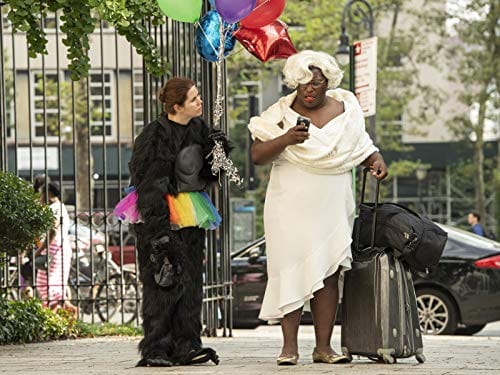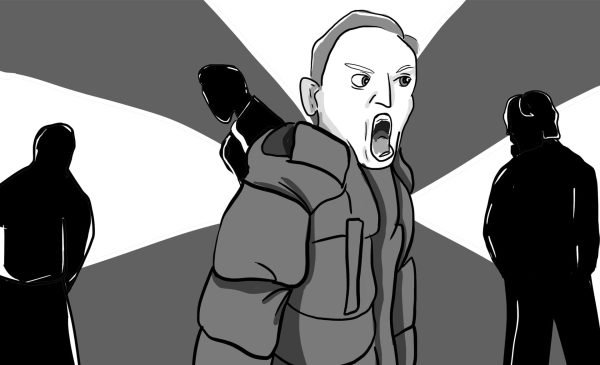On ‘High Maintenance,’ characters are expendable, but essential

Courtesy of IMDB for The DePaulia
HBO’s “High Maintenance.”
No matter the medium or the genre, characters are essential to storytelling; they are the heart and soul of any good film or TV show. If the writers and directors can’t get you to care about a character’s fate, the story isn’t worth telling. This is why we hear critics and cinephiles groan on and on about “character development.”
HBO’s quirky and brilliant vignette comedy “High Maintenance” reminds us how important characters are to effective storytelling. But instead of telling a story about the characters, the characters themselves are the story.
Traditionally, character development is important because it’s the thing that brings us back — or keeps us glued to the screen through the third act. As we watch them grow and evolve, we purchase a bigger stake in their journey. That’s why we all needed a little therapy when “Game of Thrones” killed Ned Stark (oh, shush — you’ve had plenty of time to get ahead of this spoiler).
“High Maintenance,” on the other hand, doesn’t let you get attached to its characters for very long. Instead, you’re drawn into an intense — sometimes sad; sometimes hysterical; often bizarre — introduction to one of the show’s fascinating array of characters. And just as you get to know them, their story fades out, and a new one fades in. Instead of developing the characters on screen, we get an intimate snapshot of someone’s life.
The show’s format is as open ended as television can possibly be. Just about every episode is broken down into two vignettes, each telling a unique story of somebody the viewer is yet to meet. The only thing that ties them together is a brief interaction with “The Guy,” a nameless weed dealer cycling around New York City — a location that unlocks an impossibly deep well of concepts to play with.
Contrary to what the title may lead you to believe, the show isn’t about weed — nor is it explicitly cast as the common thread. Cannabis consumption occurs in most episodes, but the connective tissue is human. “The Guy,” played by co-creator Ben Sinclair, often sells weed to the characters profiles in each episode, with the story focusing on the few hours before, during, and after they solicit his services. Sometimes, characters are followed out of the many mundane, big city interactions we all experience on a daily basis.
This model holds strong in the recently premiered fourth season and the writers reached, quite successfully, to expand their methods of weaving randomness into a narrative. This season’s first episode offers a subtle edit on the old model by weaving two storylines throughout the episode and connecting them at the end, opposed to isolating them into two individual vignettes.
The first episode features (but does not profile) Ira Glass and the creation of an episode of “This American Life” on the topic of recycling. A young producer on his staff, Yara, pitches a story about her parents’ unusual love story. Through her struggles trying to find the hidden narrative and bring the necessary elements together, she winds up confronting issues in her own relationship. In the end, she accidently records her own breakup unfolding in real time.
As her boyfriend walks out the door, we fade into the life of Arnold, a young man who created a life for himself delivering life, singing telegrams to unsuspecting strangers. We follow him scrambling around the city, making frantic wardrobe changes in stairwells and public bathrooms, fighting through hostile crowds with each performance.
The episode winds down back in the “This American Life” newsroom, as the producers sit around listening to Yara’s breakup tape. Then, Arnold appears with a singing telegram from Yara’s boyfriend, bringing the show full circle.
In this season’s fourth episode, the writers get even more creative. The show opens with a scene from a Christian summer camp, where a young girl sneaks away to smoke pot in the woods with an older camper. She walks away with a lighter, which she marks with a small sticker. From there, each vignette begins with the lighter, telling a brief story about the life of the next person to come into possession of the lighter. In the final scene, the lighter flickers out in the hand of a man holding it over his head at a concert.
Billed and often discussed as a “weed” show, “High Maintenance” offers so much more. Through its wide range of characters and stories, co-creators Sinclair and Katja Blichfeld bring to HBO an uninhibited look at weird and wonderful nuances of humanity, reminding us all that every person in this world has a unique story to tell — most of which are worth hearing.










